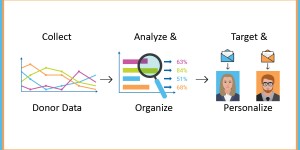Ask 10 different people what constitutes “green printing” and you’ll likely get 10 different answers. These will range from “using recycled paper” to “looking for Forest Stewardship Council (FSC) or Sustainable Green Printing (SGP) certification for printers and consumables,” to “using digital and targeted printing to reduce your press runs,” to “reducing your carbon footprint, or minimizing the impact that your business activities have on the environment,” to “purchasing carbon offsets,” to “using alternative energy sources,” to…“Is there such a thing as green printing?” This last statement tends to come from those who perceive printing as “dead trees.”
Companies in all corners of the economy are increasingly eager to tout their green credentials. About half of Fortune 500 companies now publish sustainability reports and employ sustainability managers. The trend is gathering momentum, and many designers and print buyers—as you no doubt know—have been under increased pressure from their clients to stress environmental sustainability.
Unfortunately, many companies use “greenness” as a reason to prefer electronic media, but we don’t grant the premise that e-media are more or less green than print. Paper is a renewable resource, while the fossil fuels used to generate the energy that keeps the Internet’s many insatiable servers going are not. Data centers might surpass airlines in pollution, at least according to a recent study that estimated the CO2 emissions of data center equipment. On top of that, environmental experts warn of a looming e-waste epidemic as we discard computers, peripherals, laptops, mobile devices and tons of batteries.
Suffice it to say that “green” is often a gray area and, let’s face it everything has environmental consequences. If we’re serious about environmental responsibility, a lot of education, thought and consideration are required. All too often, the response is to just throw up our hands in despair and abandon the whole idea-or to become one of the so-called “Never Greens” who have gone in the opposite direction and deliberately act as environmentally irresponsible as they can.
It also goes without saying that the economic downturn might likely forestall interest and investment in green initiatives. On the plus side, some economists suggest they could provide an engine of growth to help pull us out of any impending recession.
Rather than add to the clamor of what you should be doing, we think it’s more important—at least at the outset—to choose a simple strategy that you and your customers are comfortable with and go from there. That is, you don’t have to run out and install solar panels on the roof of your office or hook your workstations up to the wind farm you’re building behind your office. Start with using recycled papers or green-certified consumables, and add initiatives from there.
The goal is to at least do something, and to see green initiatives as an opportunity to differentiate your business, and not as an expensive imposition.
Read our tips on making your next project a little more environmentally friendly and call us today to discuss helping take the next step.
More Insights To Enjoy:
+ Print or Electronic? A Discussion on Environmental Impact
+ Think Personalization, Think Green
+ Use Print to Boost Your Online Presence
Sign up today to receive future issues of our award-winning newsletters to ensure you receive all of Action’s Insights.
© Action Graphics, 2012.





